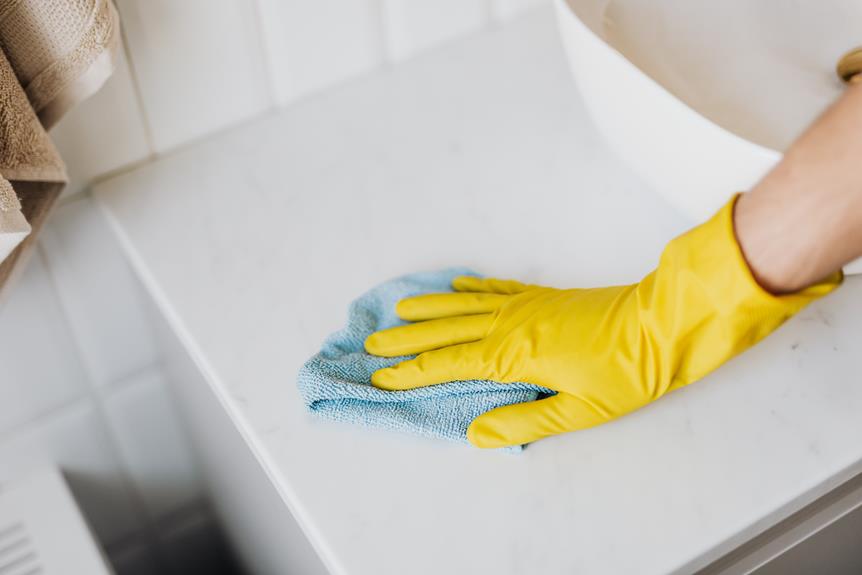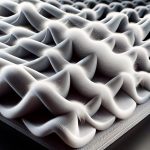Looking to furnish your living space with a sofa that's both durable and stylish? When it comes to choosing between microfiber and polyester, the decision can be a tough nut to crack.
Both fabrics have their own unique advantages, making it a bit of a head-scratcher. In this guide, we'll take a closer look at the pros and cons of each fabric to help you make an informed decision.
From durability and stain resistance to comfort and style options, we've got you covered. So, grab a cup of coffee and let's dive into the nitty-gritty of microfiber vs. polyester sofa fabrics.
Key Takeaways
- Microfiber and polyester fabrics are recommended for their durability and sustainability.
- Microfiber and polyester fabrics are resistant to stains and spills.
- Microfiber is breathable, moisture-wicking, and hypoallergenic, making it comfortable and suitable for sensitive skin.
- Microfiber and polyester fabrics offer a wide range of color and style options to suit different interior design preferences.
Durability and Longevity
When considering the durability and longevity of sofa fabric, you should look for a material that will withstand everyday wear and tear while maintaining its quality over time. Fabric pilling, which is the formation of small, fuzzy balls on the surface, and fading are common issues that can affect the appearance and lifespan of your sofa fabric. To combat these problems, microfiber and polyester fabrics are often recommended due to their resilience.
Both materials are known for their ability to resist pilling and fading, ensuring that your sofa maintains its pristine look for longer.
In addition to durability, it's important to consider the environmental impact and sustainability of the fabric. Many consumers today are seeking eco-friendly options that minimize harm to the planet. Both microfiber and polyester can be produced using recycled materials, reducing the strain on natural resources. Furthermore, these fabrics are often easier to clean, requiring less water and energy for maintenance.
Stain Resistance and Cleanability
To maintain the pristine look of your sofa fabric and ensure easy cleaning, it's essential to consider the stain resistance and cleanability of microfiber and polyester. When it comes to stain resistance and cleanability, both microfiber and polyester have their own advantages. Here are some important factors to consider:
- Fabric Protection: Microfiber is known for its natural resistance to stains and spills due to its tightly woven fibers, which prevent liquids from penetrating the fabric. On the other hand, polyester fabrics often come with stain-resistant treatments that provide an extra layer of protection against spills and stains.
- Cleaning Products: When it comes to cleaning, microfiber sofas are relatively easy to maintain. They can often be cleaned with just a damp cloth or a mild soap solution. Polyester sofas may require specific cleaning products recommended by the manufacturer to maintain their stain resistance properties.
Remember that regardless of the fabric you choose, regular maintenance and immediate attention to spills are key to preserving the stain resistance and cleanability of your sofa.
Comfort and Softness
Considering the long-term comfort and softness of your sofa fabric, evaluating the tactile experience and durability is crucial when choosing between microfiber and polyester. Both fabrics have their pros and cons when it comes to comfort and softness. Here's a comparison to help you make an informed decision:
| Aspect | Microfiber | Polyester |
|---|---|---|
| Fabric Breathability | Generally breathable, allowing for air circulation and comfort | Less breathable, may trap heat and moisture, potentially less comfortable |
| Moisture Wicking | Good at wicking away moisture, keeping the fabric dry and cozy | Tends to retain moisture, may feel damp and less comfortable |
| Allergen Resistance | Often hypoallergenic, resistant to dust mites and other allergens | May attract and retain allergens, potentially causing discomfort |
| Skin Sensitivity | Soft and gentle on the skin, suitable for sensitive skin | May feel rougher on the skin, potentially causing irritation |
| Durability | Durable and resilient, maintaining softness over time | Long-lasting, but may lose softness with prolonged use |
When selecting a sofa fabric, considering your preferences for breathability, moisture wicking, allergen resistance, and skin sensitivity is essential for long-term comfort.
Color and Style Options
To ensure your sofa fabric complements your interior decor, both microfiber and polyester offer a wide range of color and style options to suit your personal taste and design preferences.
When it comes to color variety, both microfiber and polyester fabrics come in an extensive array of hues, from classic neutrals to vibrant jewel tones, allowing you to find the perfect shade to match your existing decor.
Additionally, these fabrics offer design flexibility, with options ranging from solid colors to various patterns such as florals, geometric designs, and textures, providing you with ample choices to express your unique style.
Whether you prefer a modern, sleek look or a more traditional aesthetic, both microfiber and polyester fabrics can cater to your preferences.
With their diverse range of colors and styles, you can effortlessly find a sofa fabric that seamlessly integrates with your interior design scheme, creating a cohesive and visually appealing living space.
Maintenance and Care Tips
When it comes to maintaining and caring for your sofa fabric, both microfiber and polyester offer practical and straightforward methods to keep your furniture looking its best.
Cleaning techniques for microfiber involve using a brush or vacuum to remove dust and debris. For tougher stains, a solution of mild soap and water can be gently applied.
Polyester, on the other hand, can be easily spot-cleaned with a cloth and soapy water.
To ensure fabric protection, consider using a fabric protector spray specifically designed for microfiber or polyester. This can help repel spills and stains, making cleaning easier and preventing permanent damage to your sofa.
Additionally, rotating and flipping cushions regularly can help distribute wear and maintain the appearance of your sofa fabric.
Frequently Asked Questions
Can Microfiber or Polyester Sofas Cause Skin Irritation or Allergies?
If you have fabric allergies, look for hypoallergenic options like microfiber or polyester. These materials are generally safe and easy to clean, making them great choices for those concerned about skin irritation or allergies.
Are There Any Environmental Considerations to Take Into Account When Choosing Between Microfiber and Polyester Sofas?
When choosing between microfiber and polyester sofas, consider the environmental impact. Look for sustainability initiatives such as recycled materials or eco-friendly manufacturing processes. These choices can help reduce your ecological footprint.
Do Microfiber or Polyester Sofas Retain Odors Differently?
You'll find that microfiber and polyester sofas differ in odor retention and cleaning ease. Microfiber tends to hold onto odors more, but both fabrics are durable and easy to maintain with regular cleaning.
Can Microfiber or Polyester Sofas Withstand Exposure to Direct Sunlight Without Fading or Deteriorating?
Yes, both microfiber and polyester sofas can withstand exposure to direct sunlight without fading or deteriorating. They are durable and have good color fastness. Regular maintenance will help prolong their lifespan.
Are There Any Special Considerations for Households With Pets When Choosing Between Microfiber and Polyester Sofas?
When choosing between microfiber and polyester sofas for households with pets, consider pet-friendly features and durability. Both fabrics are relatively easy to maintain, but microfiber may require more frequent cleaning due to its ability to attract pet hair.
- Tetron Fabric for Marine Applications: Durability and Use Cases - June 18, 2025
- Tetron Fabric for Outdoor Furniture: Weather Resistance and Care - June 18, 2025
- Tetron Fabric for Wall Coverings: Style and Application Tips - June 18, 2025





